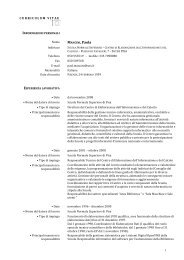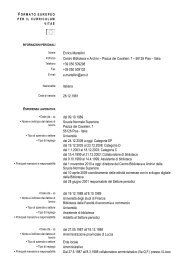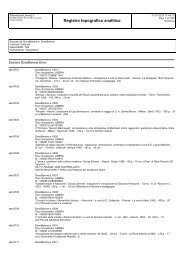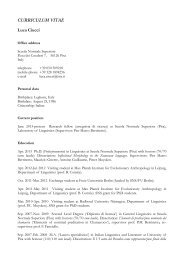Metrics of curves in shape optimization and analysis - Andrea Carlo ...
Metrics of curves in shape optimization and analysis - Andrea Carlo ...
Metrics of curves in shape optimization and analysis - Andrea Carlo ...
Create successful ePaper yourself
Turn your PDF publications into a flip-book with our unique Google optimized e-Paper software.
10.6.2 Existence <strong>of</strong> flow for the centroid energy (2.9)Theorem 10.29 Let us fix v ∈ lR n , let E(c) = 1 2 |avg c(c) − v| 2 ; let the <strong>in</strong>itialcurve c 0 ∈ C 1 , then the ˜H 1 gradient descent flow <strong>of</strong> E has an unique solutionC = C(t, θ), for all t ∈ lR, <strong>and</strong> C(t, ·) ∈ C 1 .Results <strong>of</strong> a numerical simulation <strong>of</strong> the above gradient descent flow areshown <strong>in</strong> figure 12 on the follow<strong>in</strong>g page.Before prov<strong>in</strong>g the theorem, let us comment on an <strong>in</strong>terest<strong>in</strong>g property <strong>of</strong>the above gradient flow.Remark 10.30 The length <strong>of</strong> the <strong>curves</strong> len(C(t, ·)) is constant dur<strong>in</strong>g theevolution <strong>in</strong> t.Pro<strong>of</strong>. Indeed it is easy to prove that ∂ t len(C(t, ·)) = 0: the Gâteaux differential<strong>of</strong> the length <strong>of</strong> a curve c is∫D len(c; h) = (D s c · D s h) ds ;substitut<strong>in</strong>g the value <strong>of</strong> D s C(t, ·)) from eqn. (10.25),c∂ t len(C(t, ·)) = D(len(C))(∂ t C)∫1 〈=λL 2 D s C, ( D s C〈(avg c (C) − v), (C − avg c (C))〉 + α )〉 ds =〈∫〉 ∫1=λL 2 (avg c (C) − v), (C − avg c (C)) ds + (D s C · α) ds = 0 .We now present the pro<strong>of</strong> <strong>of</strong> the theorem 10.29.Pro<strong>of</strong>. We will first <strong>of</strong> all prove existence <strong>and</strong> uniqueness <strong>of</strong> the gradient flow forsmall time, us<strong>in</strong>g the Cauchy–Lipschitz theorem 25 <strong>in</strong> the space M <strong>of</strong> immersed<strong>curves</strong>, seen as an open subset <strong>of</strong> the C 1 Banach space (see Def<strong>in</strong>ition 10.24).To this end we will prove that c ↦→ ∇˜H1E(c) is a locally Lipschitz functionalfrom C 1 <strong>in</strong>to itself. Afterward, we will directly prove that the solution exists forall times.So, let us fix c 1 , c 2 ∈ C 1 ∩ M that are two <strong>curves</strong> near c 0 . Let us fix ε > 0 byε := <strong>in</strong>fθ |c′ 0(θ)|/2 .By “near” we mean that, <strong>in</strong> all <strong>of</strong> the follow<strong>in</strong>g, we will require that ‖c i −c 0 ‖ 1 < ε,for i = 1, 2. We will need the follow<strong>in</strong>g (easy to prove) facts. (In the follow<strong>in</strong>g,the <strong>in</strong>dex i will represent both 1, 2).• <strong>in</strong>f θ |c ′ i (θ)| ≥ ε, so all <strong>curves</strong> <strong>in</strong> the neighborhood are immersed.25 A.k.a. as the Picard–L<strong>in</strong>delöf theorem77


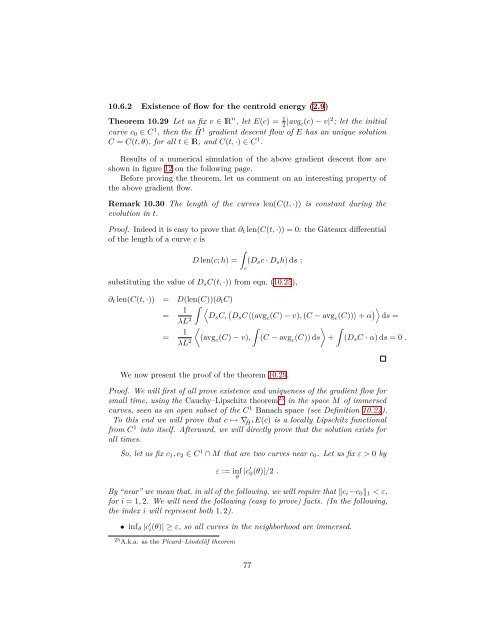

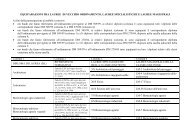
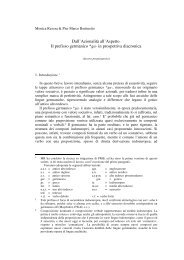
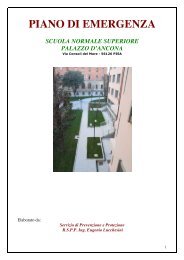
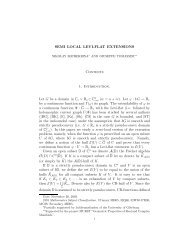
![4. Ghost [Å] vowels in French - Laboratorio di Linguistica](https://img.yumpu.com/49999334/1/184x260/4-ghost-a-vowels-in-french-laboratorio-di-linguistica.jpg?quality=85)



